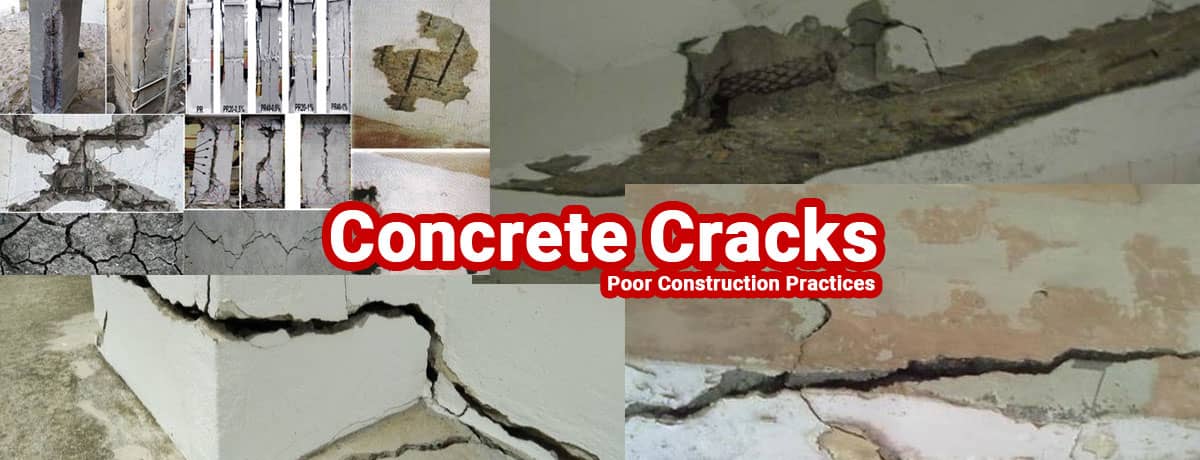Concrete Cracks due to Poor Construction Practices

The construction industry must achieve quality control and quality assurance up to the selected level. It is indisputable that construction work is of high quality. Any means must employ to achieve it. Due to construction defects, cracks are commonly observed in the structure.
Poor construction activities and lack of attention from contractors result in defective work, which increases construction costs. Engineers and owners bear the burden for this as well. These rectification works require additional time, which delays projects.
Types of Poor Construction Practices
Addition of Fresh Water on Construction Structure
A common construction error is adding water to concrete to make it more workable; this reduces concrete strength and increases shrinkage and settlement. A shrinkage crack and plastic settlement crack will eventually form. Compared to the latter, which is primarily diagonal, the former is isolated or individual.
Offset Strength Reduction by Increasing Unnecessary Amount of Cement
As a result of adding unnecessary cement to the concrete element, temperature differentials would also increase between the interior and exterior sections. Cement content increases thermal stress as well as drying shrinkage stress. Concrete cracks because of this.
Inadequate Support from Formwork
If the formwork is not properly supported and consolidated, the setting of concrete will be inadequately supported. Furthermore, improper placement of construction joints causes joints to open at high-stress points.
Inadequate Concrete Curing
Concrete that is not properly cured reduces its strength because the hydration of cement reduces. Concrete develops cracks as a result of self-weight before it has gained enough strength to support itself.
Using cement-replacement materials such as silica fumes, slag, and fly ash without properly curing them can lead to significant problems. Proper curing of cementitious materials prevents high drying shrinkage. Otherwise, excessive concrete tensile strength will result, making crack development inevitable.
Remedies of Poor Construction Practices
- Concrete should never pour on frozen ground.
- Compaction of the ground is necessary before placing concrete.
- The preparation of the subgrade depends on the soil conditions. It may be possible to pour some flatwork directly on the soil. Another requirement is to install a steel rebar into the slab along with 6 inches of base fill.
- You will get a good concrete job if you understand what your contractor is doing regarding each of the items above.
What is the width at which a crack in concrete becomes a problem?
There is no definitive answer to that question, which often arises. It varies depending on the project. Architects, engineers, and contractors may think that a crack is acceptable, but a homeowner might not.
In general, cracks running the length of the concrete and wider than a credit card are structural and may indicate more serious problems. It is rarely acceptable to have cracks of any width in concrete. If you suspect a crack in your concrete, consult an engineer or a concrete repair professional.
You may need to cover the repair itself with an overlay if you decide to repair the crack. However, saw cutting, staining, and other techniques can often conceal or accentuate a crack.
Conclusion
Weak construction practices can cause concrete cracks, such as insufficient concrete curing, inadequate support for the formwork, and poorly compacted concrete. Because of these errors, concrete weakens and cracks under lower tensile stresses than those predicted by design. As a result, contractors and engineers should avoid poor construction practices by following the right procedures. Through effective construction supervision and the hiring of skilled workers, this can accomplish.
